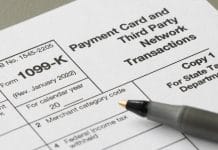Student loans weighing you down? You’re not alone. With over 45 million Americans carrying federal student debt totaling more than $1.7 trillion, the burden is real—and it’s crushing dreams of homeownership, retirement savings, and basic financial stability.
But here’s the good news: new student debt relief programs are changing the game. Whether you’re a teacher struggling with monthly payments, a nonprofit worker drowning in interest, or an early-career professional just trying to get ahead, understanding these programs could save you thousands of dollars.
What Is the New Student Debt Relief Program?
The new student debt relief program represents a comprehensive government initiative designed to provide meaningful assistance to federal student loan borrowers. Unlike previous temporary measures, this program offers multiple pathways to relief, including loan forgiveness, payment adjustments, and interest relief for eligible borrowers.
These programs aren’t just about wiping away debt—they’re about creating sustainable repayment options that actually work for real people with real budgets. The Department of Education has streamlined processes, expanded eligibility criteria, and introduced new protections to help borrowers navigate their way to financial freedom.
Who Qualifies for Student Debt Relief?
Income Requirements Most relief programs target borrowers earning less than $125,000 individually or $250,000 for married couples filing jointly. This covers the vast majority of graduates working in education, healthcare, nonprofit sectors, and public service.
Loan Type Eligibility Federal student loans are the primary focus, including:
- Direct Subsidized and Unsubsidized Loans
- Direct PLUS Loans (including Parent PLUS)
- Direct Consolidation Loans
- Federal Perkins Loans (in some programs)
Unfortunately, private loans from banks and credit unions don’t qualify for federal relief programs. If you have private loans, you might want to explore private student loan repayment options to understand your alternatives.
Employment-Based Qualifications Certain programs offer enhanced benefits for:
- Public school teachers
- Healthcare workers
- Government employees
- Military personnel
- Nonprofit organization employees
Types of Relief Available
Income-Driven Repayment (IDR) Adjustments
The new IDR plans cap payments at 5-10% of your discretionary income, with forgiveness after 10-20 years of payments. For many borrowers, this means dramatically lower monthly payments and a clear path to eventual forgiveness.
Public Service Loan Forgiveness (PSLF) Improvements
PSLF has been overhauled with more flexible requirements and better processing. If you work in qualifying public service, you could see complete loan forgiveness after just 10 years of payments.
Interest Relief Measures
Some programs eliminate or reduce interest accrual, preventing your balance from growing even when you’re making payments. This is particularly valuable for borrowers on income-driven plans where payments might not cover full interest.
One-Time Forgiveness Programs
Depending on current legislation, eligible borrowers may qualify for immediate forgiveness of $10,000 to $20,000 in federal student debt.
How to Apply for Student Debt Relief
Step 1: Gather Your Information You’ll need:
- Federal Student Aid ID (FSA ID)
- Tax returns from the past two years
- Employment verification
- Loan servicer account information
Step 2: Visit Official Channels Only Apply exclusively through:
- StudentAid.gov (the official federal website)
- Your loan servicer’s website
- Your loan servicer’s phone line
Warning: Avoid third-party companies charging fees for application assistance. The application process is free, and these companies often prey on desperate borrowers.
Step 3: Choose the Right Program Different programs serve different needs:
- Need lower payments? Consider IDR plans
- Work in public service? PSLF might be perfect
- Seeking immediate relief? Look into forgiveness programs
- Struggling with multiple loans? Debt consolidation could help
Financial Impact and Benefits
Immediate Benefits
- Reduced monthly payments
- Lower debt-to-income ratio
- Improved cash flow for other financial goals
- Potential credit score improvement
Long-Term Advantages
Relief from student debt opens doors to:
- Homeownership opportunities
- Retirement savings in your 20s and 30s
- Emergency fund building
- Investment opportunities
Tax Considerations
Under current federal law through 2025, forgiven student loans are not considered taxable income. However, state tax implications vary, so consult with a tax professional about your specific situation.
Common Myths and Misconceptions
Myth 1: “Relief programs are too good to be true”
Reality: These are legitimate federal programs backed by legislation and Department of Education regulations.
Myth 2: “I make too much money to qualify”
Reality: Many programs have generous income limits, and even high earners might benefit from IDR plans.
Myth 3: “Private loans are covered”
Reality: Federal programs only cover federal loans. Private loan borrowers need different strategies for debt management.
Myth 4: “Applications are complicated”
Reality: The Department of Education has simplified processes significantly.
Timeline and Processing
Application Processing: 4-8 weeks for most programs
IDR Plan Changes: 30-60 days to take effect
PSLF Processing: 90-120 days for employment certification
Forgiveness Applications: 3-6 months for final processing
Remember, these timelines can vary based on your loan servicer and the complexity of your situation. Stay patient and maintain regular communication with your servicer.
Maximizing Your Benefits
Smart Strategies
- Apply Early: Don’t wait—some programs have limited funding or changing requirements
- Keep Records: Document everything, including payment history and employment
- Stay Informed: Program details can change with new legislation
- Consider Consolidation: Combining loans might unlock additional relief options
Avoiding Pitfalls
- Never pay upfront fees for “guaranteed” forgiveness
- Don’t ignore loan servicer communications during application processing
- Avoid letting loans default while applications are pending
- Don’t assume one rejection means you’re ineligible for all programs
Beyond Student Loans: Building Financial Health
While addressing student debt is crucial, it’s just one piece of your financial puzzle. Consider these parallel strategies:
- Build an emergency fund even with loan payments
- Explore high-yield savings accounts for better returns
- Learn money management tips to optimize your budget
- Consider side hustle opportunities to accelerate debt payoff
Red Flags: Avoiding Student Loan Scams
Warning Signs Include:
- Companies requesting upfront fees
- Guarantees of loan forgiveness
- Pressure to act immediately
- Requests for your FSA ID password
- Claims they can help with private loans through federal programs
Protect Yourself:
- Only use official government websites
- Never share your FSA ID credentials
- Report suspected scams to the Federal Trade Commission
- When in doubt, contact your loan servicer directly
What’s Next: Staying Informed
Student debt relief programs continue evolving with new legislation and policy changes. To stay current:
- Bookmark StudentAid.gov for official updates
- Sign up for email alerts from your loan servicer
- Follow the Department of Education’s social media channels
- Consider consulting with a nonprofit credit counselor for personalized advice
Take Action Today
Student debt doesn’t have to define your financial future. With new relief programs offering unprecedented opportunities for forgiveness and payment reduction, there’s never been a better time to take control of your loans.
Your Next Steps:
- Log into StudentAid.gov to review your loans
- Contact your loan servicer to discuss relief options
- Gather required documentation for applications
- Choose the program that best fits your situation
- Submit your application through official channels
Remember, these programs exist because policymakers recognize that student debt has become a barrier to economic prosperity for millions of Americans. You’ve earned your education—now make sure it doesn’t prevent you from achieving your dreams.
The path to financial freedom starts with a single step. Take yours today, and join millions of Americans who are successfully reducing or eliminating their student debt burden through these powerful relief programs.
Don’t let another month pass paying more than you need to. Your future self will thank you for taking action now.
This guide provides general information about federal student debt relief programs. Individual circumstances vary, and program details may change. Always consult official government sources and consider speaking with a qualified financial advisor for personalized guidance.
For more financial guidance and money-saving tips, visit https://wealthopedia.com/

























